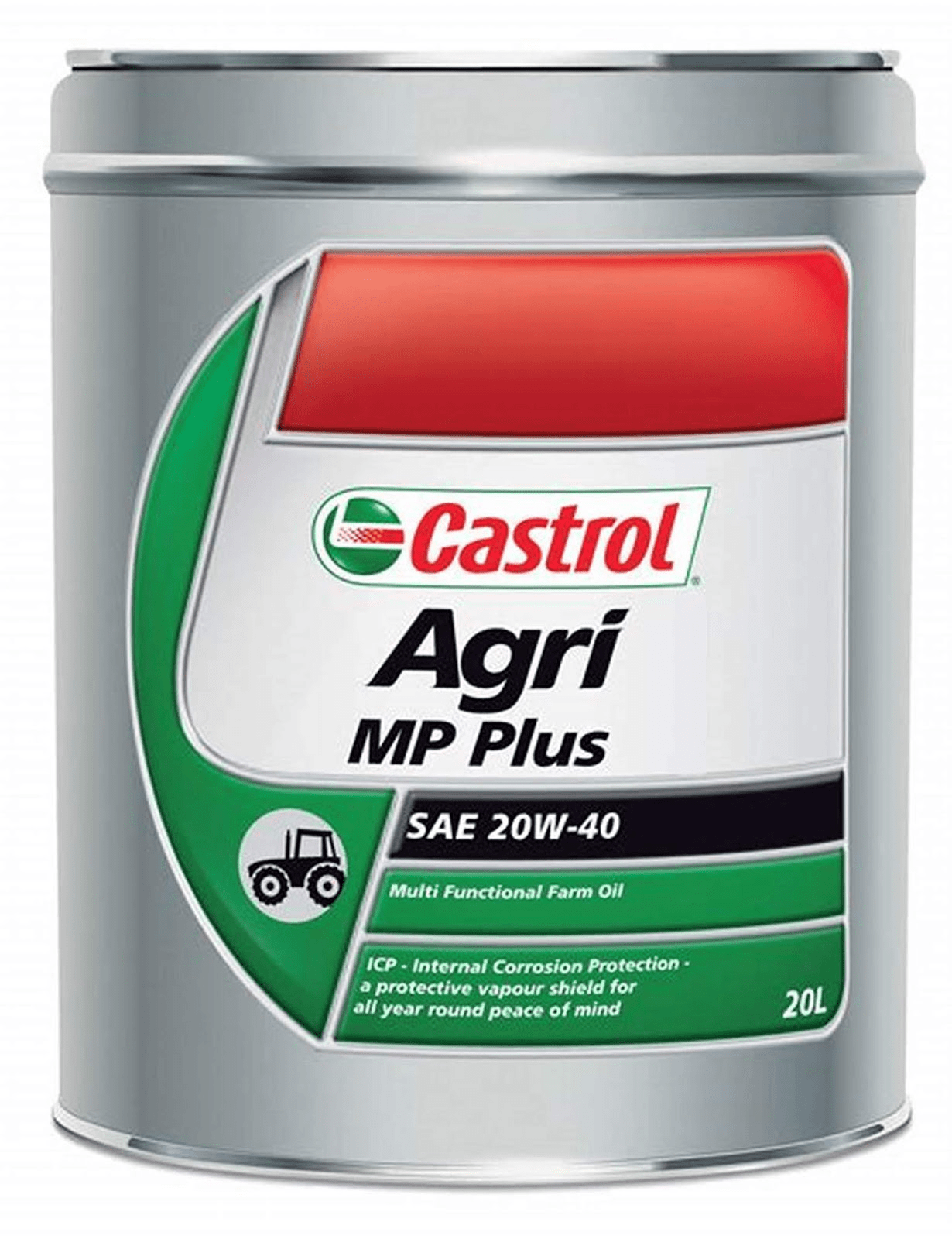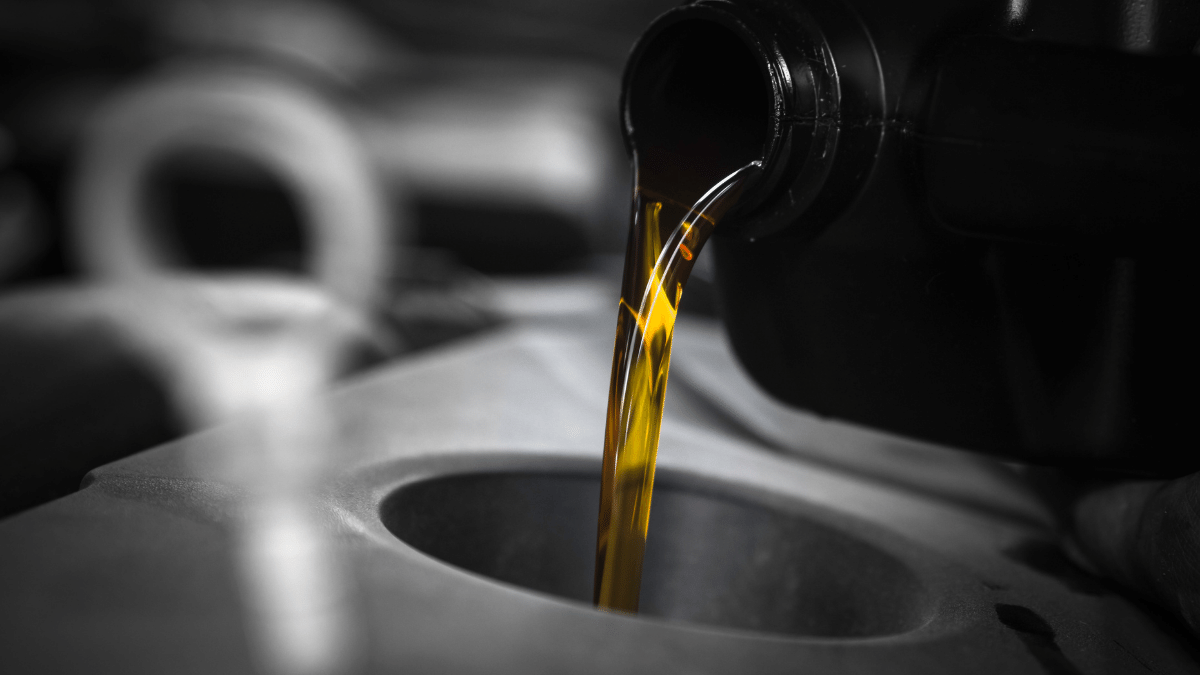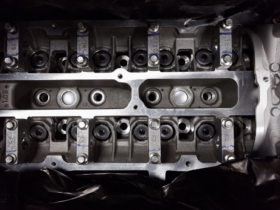Engine oil is a type of lubricant that lubricates the internal parts of an IC Engine. It is quenched by an oil pump to all the internal moving parts of the engine. Engine oil is available in multiple varieties with specified volumes like 900ml, 1 litre, 1.15 litre, etc.
Main Functions of Engine Oil
- Reduces the temperature
There are a number of moving parts in an engine. They relatively move at a very high speed depending on the engines’ rpm. So, they produces heat in large amounts. The engine oil helps in reducing that heat and helps those moving parts to move at high speed without any problem. Thus, cools the engine. - Protects them from corrosion
Engine oil helps in protecting engine parts so that they don’t get corroded. - Reduce wear and tear
When engine parts are moving they are actually sliding against each other which means that one surface is getting rubbed to the other surface and friction is generated. And due to friction heat is generated. Engine oil thereby reduces friction and heat. - Reduces sound
When there is no oil in an engine, it makes a rough sound than in normal conditions. Engine oil helps in reducing engine sound and smooth acceleration and idling. - Cleaning engine
Sludge is formed when the engine is in operation and oil cleans the parts from sludge, thus, improving the sealing of piston rings.
Engine Oil Components
Engine oil is made from 2 parts i.e. Base and Additives.
The base commonly makes up 95 percent of the solution and is either made from petroleum, synthetic chemicals, or a mixture of these two. The base is responsible for lubricating an engine’s moving parts and removing built-up heat.
The additives, meanwhile, account for roughly five percent of the oil. It is these chemicals that are responsible for finely controlling the oil viscosity and lubricity, as well as protecting engine parts against wear.
Zinc dialkyl dithiophosphate (ZDDP) is a frequently used additive for preventing wear, while magnesium sulphonates help the oil to break down impurities and engine sludge.
Different Grades of Engine Oils
The engine oils are rated on the basis of their grade and viscosity. The oil can be of a single grade or multigrade with a defined viscosity number for reference that the oil can act at two different viscosities depending on the operating temperature. The rate of flow is measured on basis of viscosity grade scale which ranges from 0 to 60.
For example, the grade of oil is 20W40 in which W stands for winter. The number before W indicates the viscosity of oil at cold temperature. Oils are thicker at low temperatures and tend to exhibit more resistance and require more energy to pump and circulate around.
The number after W indicates the viscosity of oil at high temperatures (when the engine is hot). Oil becomes thin at high operating temperatures and also become slightly less effective. So, they stick less to moving parts at high temperatures.
Now, oil of 10W40 grade will be more effective than 20W40 grade oil at cold temperatures. However, 10W40 will be less effective than 10W50 at higher temperatures, when the engine is hot.
Types of Engine Oil
There are 3 different types of engine oil present in the market. They are:
Conventional Oil / Mineral Oil

It is entry-level engine oil and is mostly used in commuter vehicles. They are refined petroleum oils that undergo treatment to perform across a wide temperature. In addition, they are fortified with other additives to comply with specific requirements of a two-wheeler.
Application
- Small cc engines. Mostly in two-wheeler (Bikes and mopeds).
Advantages
- Easily available
- Cheapest of all oils.
Disadvantages
- Changing interval is more. Needs frequent changes of oil (Doesn’t last as long as semi-synthetics or synthetics).
- This oil’s quality degrades after using at high temperatures over a particular period of time.
- Shows inefficiency when operated under high temperature. The engine feels sluggish.
Semi-Synthetic Oil

They are also known as synthetic blend oil. They are usually made of small amounts of synthetic engine oil blended with mineral oil to boost their properties without being much expensive. Basically, they offer some properties of synthetic oils and come at a price closer to mineral oils.
Advantages
- Lasts longer than mineral oil.
- Good protection as compared to mineral oil.
Disadvantages
- The performance of the engine is somewhat similar to that of mineral oil. Only minor properties of synthetics are present. Does not offer the true characteristics of synthetics.
Synthetic Oil

They are chemically engineered mineral oil. However, the difference is that they go through extensive chemical treatment in labs to make them significantly superior to their mineral counterparts. As a part of the process, the mineral oil is broken down into the most basic molecules. As a result, it also helps remove any undesired substances and impurities to a very high degree. They are formulated with higher-performing additives, so they tend to perform much better at extremely high temperatures.
Applications
- Performance bikes, cars, and heavy vehicles.
- Commuter bikes above 150cc. (Can be used in smaller 100cc but synthetic oil will be too smooth for 100cc. However, 100cc bikes will not produce heat like 150cc bikes so there will be problems like clutch slip and performance will not be adequate).
Advantages
- Above all, it provides excellent performance an engine can give. Doesn’t lose its properties at high temperatures.
- Super smooth operation and good protection against wear & tear.
- Lasts very long as compared to mineral and semi-synthetics and changing interval is less.
- Low friction, good thermal stability, and increased load carrying capacity.
Disadvantages
- These are almost 3 times more expensive than mineral oil.
Selection of Engine oil
Firstly, use only the correct grade of engine oil. For example, If a bike is recommended with 20W40 grade, then it is sage to use 20W40 grade. However, the grade can be slightly changed according to the climate and the engine operation.
For cold climates, 10W40 can also be used as the viscosity is better than 20W40 and it will protect more in cold temperatures. But it is better to stick to the recommendation by the manufacturer as the grade recommended is defined particularly for all conditions and the engine will be most suitable for it. Also, choosing the recommended oil can increase the fuel efficiency of bikes.
The engine oil manufacturers do not make any difference. So, you need to remember that incorrect oil grades will lead to deteriorated performance, and your vehicle’s internal parts can get damaged. Some of the most popular engine oil manufacturers are Castrol, Shell, Motul, Mobil, etc.










Leave a Reply
View Comments